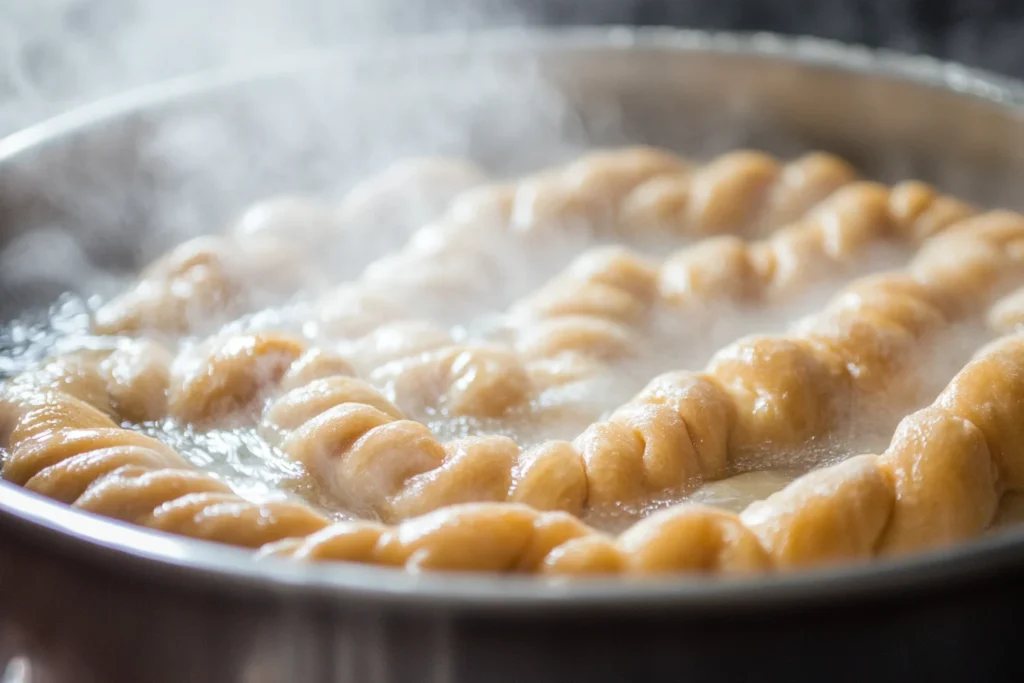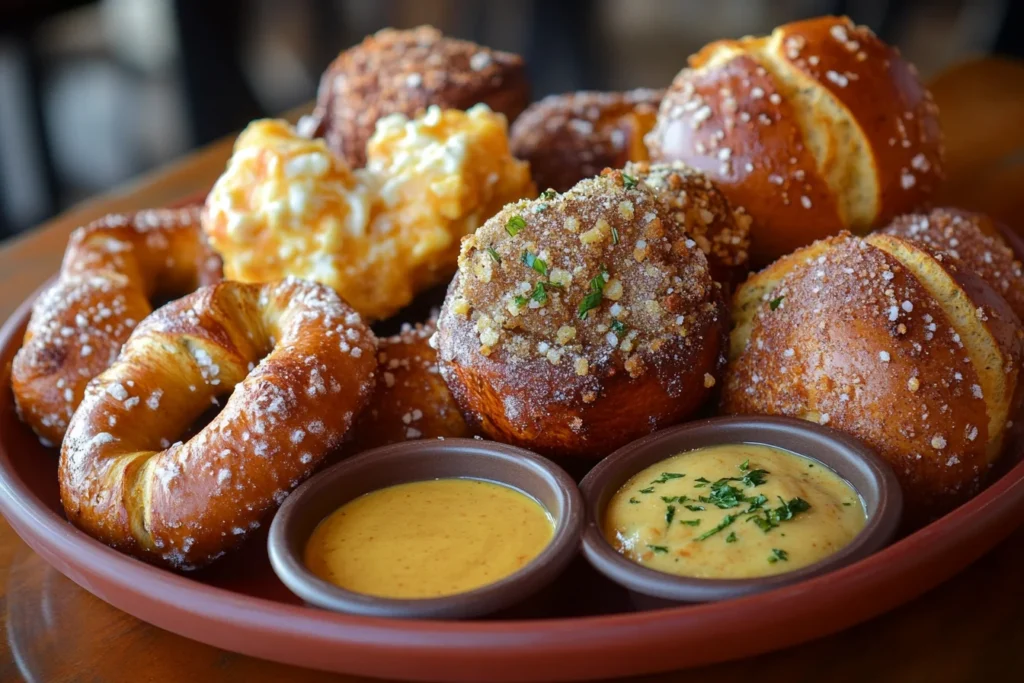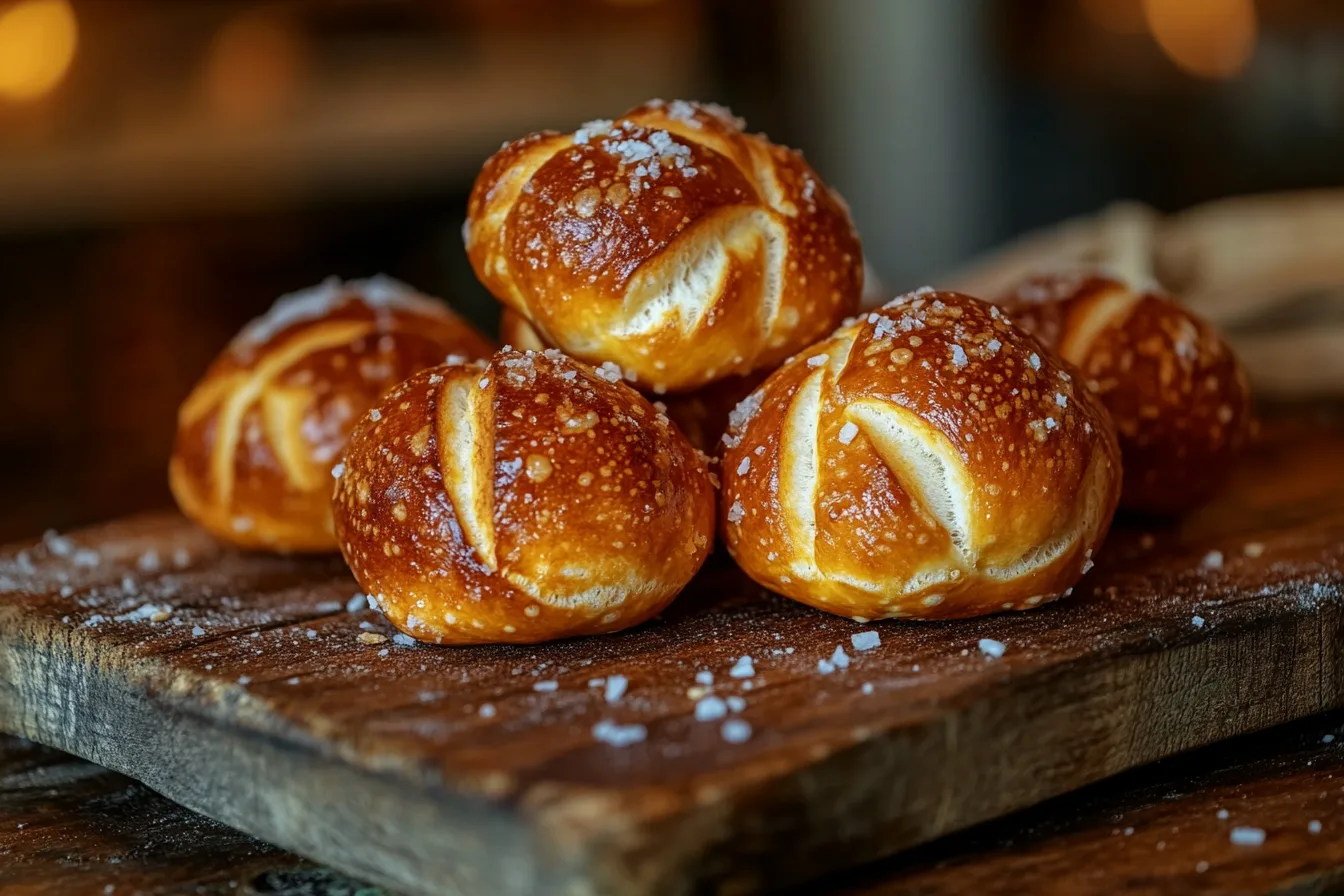Making pretzels at home can be a fun and rewarding experience, but it often raises a critical question: Do you have to boil pretzels before baking? This traditional step is deeply rooted in pretzel-making history and science, giving pretzels their iconic golden crust and chewy texture. In this article, we’ll explore why boiling is crucial, the science behind it, alternative methods, and tips for making perfect pretzels at home. By the end, you’ll have a clear understanding of whether this step is essential and how to make it work for you.
Let’s dive in with the traditions behind boiling pretzels.
The Tradition of Boiling Pretzels
Why Pretzels Are Boiled Before Baking
Boiling pretzels isn’t just a random step; it’s a time-honored tradition that defines their character. The hot water bath, often infused with baking soda or lye, is the secret to that unmistakable pretzel crust. The boiling process creates a glossy, dark brown finish and helps develop a chewy interior while maintaining a firm outer shell.
Without boiling, pretzels might resemble a soft bread roll rather than the iconic snack we all know and love. The process also enhances the dough’s ability to retain its shape during baking, ensuring those signature twisted designs look picture-perfect.
The Historical Roots of Boiling in Pretzel Making
Pretzel-making dates back centuries, with origins tracing to European monks in the early Middle Ages. The monks developed the boiling technique as part of their bread-making rituals. Historically, lye—a highly alkaline solution—was used to boil pretzels, lending them their unique taste and texture.
This tradition continues today, especially in Germany, where pretzels are a cultural staple. While modern bakers often substitute lye with baking soda for convenience and safety, the principle remains the same: the boiling step is essential to achieving authentic pretzels.
Do You Have to Boil Pretzels Before Baking?
The Science Behind Boiling Pretzels
How Boiling Affects the Dough’s Structure
The boiling step in pretzel-making is more than a ritual—it’s a critical part of the science behind the perfect pretzel. When pretzel dough is boiled, the outer layer of starch gelatinizes. This creates a protective barrier, which locks in moisture and prevents the pretzel from becoming overly soft during baking.
Boiling also sets the dough’s shape, ensuring those classic twists and knots hold firm in the oven. Moreover, the high alkalinity from baking soda or lye in the boiling solution promotes the Maillard reaction—a chemical process that gives pretzels their distinct golden-brown crust and characteristic flavor.
Skipping this step results in a softer, less chewy texture that’s closer to bread rolls than authentic pretzels.

Role of Baking Soda or Lye in the Boiling Process
Lye, a powerful alkaline solution, has been used in traditional pretzel recipes for centuries. It’s what gives pretzels their unique flavor and deep brown color. However, many home bakers opt for a safer alternative: baking soda. When dissolved in boiling water, baking soda raises the water’s pH level, creating a mildly alkaline solution.
While baking soda doesn’t deliver the same depth of color and flavor as lye, it’s a safer, more accessible option for achieving a comparable result. For those curious about exploring the traditional method, recipes like this guide to lye pretzels might provide useful insights.
Methods of Boiling Pretzels
Traditional Lye Solution: Benefits and Risks
Using lye in pretzel boiling produces the most authentic results, giving the dough its deep-brown color and characteristic tangy taste. However, lye is caustic and must be handled with care. It’s typically diluted in water to form a safe, effective solution for pretzel boiling.
Bakers working with lye should always use gloves and protective eyewear. It’s also crucial to thoroughly rinse pretzels to ensure no traces of lye remain before baking.
For those aiming for a true German-style pretzel, lye is the gold standard. However, beginners may prefer starting with safer alternatives.
Baking Soda Alternative: A Safer Option?
Baking soda is the go-to choice for many home bakers looking for a less intimidating approach to pretzel making. Simply dissolve a few tablespoons of baking soda in boiling water, then dip your pretzels in the solution for 20-30 seconds. This method is easy, safe, and effective, delivering pretzels with a glossy crust and mild pretzel-like flavor.
For an extra boost, some recipes suggest baking the soda beforehand to enhance its alkalinity. This technique bridges the gap between traditional lye and a simpler, accessible solution for home kitchens.
Do You Really Need to Boil Pretzels?
Impact of Skipping the Boiling Step
So, do you have to boil pretzels before baking? While boiling is traditional, skipping this step changes the texture and flavor of the final product. Without boiling, pretzel dough doesn’t achieve the same chewy texture or glossy, golden-brown crust. Instead, the result is more like a bread roll—soft and pale.
Boiling also gives pretzels their signature taste by setting the alkaline solution into the dough, which contributes to the deep, savory flavor. Omitting this step means your pretzels will lack the depth of flavor that makes them so unique. If you’re pressed for time, you can bake the pretzels directly, but be prepared for a less authentic result.
Alternative Techniques for Achieving a Pretzel-Like Crust
If boiling feels intimidating or time-consuming, there are alternative ways to approximate a pretzel crust. One popular method involves brushing the dough with a baking soda solution instead of boiling. Simply mix baking soda with warm water and generously coat the pretzel dough before baking. While this won’t perfectly replicate the traditional boiling method, it can deliver a similar texture and appearance.
Another trick is to use a baking soda bath in the oven. Spread baking soda on a baking sheet, heat it to 350°F for about an hour, and then dissolve it in water. This enhances its alkalinity, making it a closer substitute for lye.
For more innovative recipe ideas, check out this guide to pretzel sticks for creative twists on classic techniques.
Tips for Perfect Pretzels at Home
Common Mistakes in Pretzel Preparation
Even seasoned bakers can make mistakes when making pretzels. One common error is not boiling the pretzels long enough. A quick dip won’t allow the dough to fully gelatinize, resulting in a lackluster crust. Conversely, boiling too long can overcook the dough, leading to a rubbery texture.
Another pitfall is using too little baking soda or lye in the boiling solution. Without the right alkalinity, pretzels won’t achieve their signature flavor or color. Be sure to measure ingredients carefully and follow your recipe’s instructions.
Step-by-Step Guide to Boiling and Baking Pretzels
Perfecting pretzels at home is simpler than it seems with these easy steps:
- Prepare the dough. Follow a trusted pretzel recipe to knead and proof your dough.
- Boil the pretzels. Heat water with baking soda (or lye for a traditional approach) to a boil. Dip each pretzel for 20–30 seconds.
- Bake to perfection. After boiling, place the pretzels on a lined baking sheet, sprinkle with salt, and bake until golden brown.
For an in-depth recipe, explore our collection of easy and versatile pretzel recipes that cater to both beginners and seasoned bakers.
FAQs About Boiling Pretzels
What Happens If You Don’t Boil Pretzels?
Skipping the boiling step can significantly affect your pretzels. Without boiling, the dough won’t form that distinctive crust, resulting in a texture closer to bread rolls. Moreover, the Maillard reaction—a key process that creates the golden-brown color and savory flavor—is less pronounced. So, do you have to boil pretzels before baking? If you want authentic pretzels with the chewy texture and shiny crust, boiling is a must.
Can You Use Honey Instead of Baking Soda for Pretzels?
While honey adds sweetness, it doesn’t replicate the alkaline conditions created by baking soda or lye. The alkalinity is crucial for achieving the unique crust and flavor of a pretzel. However, honey can be used as a glaze or in the dough itself to enhance flavor, giving your pretzels a creative twist.
Is It Safe to Use Lye for Pretzels?
When used correctly, lye is safe for pretzel-making and delivers unmatched authenticity. It’s essential to dilute the lye properly and wear gloves and goggles while handling it. After boiling, the lye reacts with the dough and becomes neutralized during baking, making it safe to eat. For those hesitant about lye, baking soda offers a safer alternative.
How Long Should You Boil Pretzels?
The ideal boiling time for pretzels is 20 to 30 seconds per side. This timeframe is enough to gelatinize the starch on the dough’s surface without overcooking it. Longer boiling times can result in a gummy texture, so stick to this guideline for the best results.
Conclusion
Boiling pretzels before baking isn’t just a step in the process—it’s the defining factor that transforms dough into a classic pretzel. Whether you choose the traditional lye bath or a safer baking soda solution, this essential step ensures the perfect texture, color, and flavor. Skipping it might save time, but the results won’t be the same.
For those asking, do you have to boil pretzels before baking? The answer is a resounding yes, if you’re aiming for authentic results. With the tips and techniques shared in this guide, you’re well on your way to mastering the art of pretzel-making at home. So roll up your sleeves, heat that pot, and enjoy the satisfaction of homemade pretzels done right.
Exploring Variations in Pretzel Recipes
Soft vs. Hard Pretzels: Does Boiling Matter?
When it comes to pretzel styles, soft and hard pretzels have distinct characteristics. Soft pretzels, often enjoyed fresh and warm, benefit greatly from boiling, as this step creates the chewy texture and shiny crust they’re known for. On the other hand, hard pretzels, which are crisp and shelf-stable, may not require boiling. Instead, these pretzels undergo a longer baking process at a lower temperature to achieve their crunch.
So, do you have to boil pretzels before baking for every type? Not necessarily. For soft pretzels, boiling is essential. For hard pretzels, this step can be skipped or modified based on the recipe.
Creative Twists on Traditional Pretzels
Pretzel recipes have evolved beyond the classic salted twist. From sweet cinnamon-sugar pretzels to savory stuffed varieties filled with cheese or jalapeños, there’s no limit to creativity. While traditional boiling methods still apply to these variations, some recipes adjust the boiling solution or skip it entirely for a softer crust.
For instance, dessert pretzels might replace baking soda with sugar water for a slightly sweet glaze. If you’re looking to expand your pretzel repertoire, consider trying unique recipes like pretzel sticks with dips to impress your guests.

Troubleshooting Common Pretzel Issues
Why Are My Pretzels Pale?
A pale pretzel often means the boiling solution wasn’t alkaline enough. Baking soda or lye is crucial to trigger the Maillard reaction, which creates the golden-brown crust. If your pretzels lack color, ensure you’re using enough baking soda (at least 2–3 tablespoons per quart of water) or consider increasing the concentration.
Another common cause is insufficient boiling time. Remember, dipping the pretzels in the solution for 20–30 seconds allows the starch to gelatinize, setting the stage for browning in the oven.
Why Do My Pretzels Taste Like Bread?
If your pretzels taste more like bread, it’s likely due to skipping the boiling step. Boiling in an alkaline solution not only improves texture but also imparts the signature pretzel flavor. Without this step, the dough remains plain, resulting in a bread-like taste. To fix this, always boil your pretzels before baking and adjust the solution for better flavor.
With these tips and techniques, you’re now equipped to tackle any pretzel challenge and create variations that suit your taste. Whether you’re experimenting with flavors or perfecting the traditional method, you can confidently answer the question, do you have to boil pretzels before baking? Yes, for authentic results, boiling is key.

